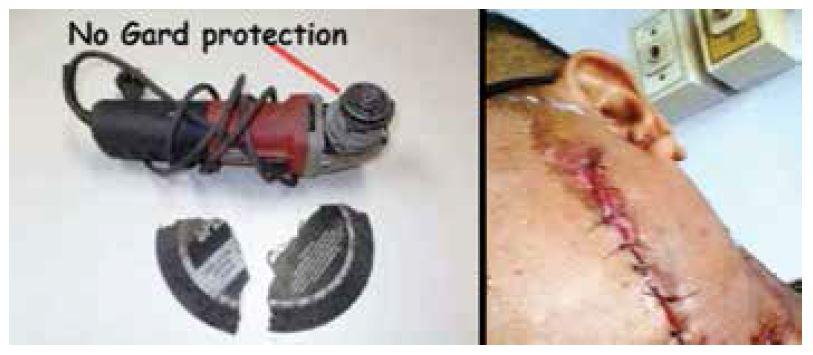201725 Grinder injury causes repatriation
The vessel was about to heave up anchor, but due to a problem with the windlass the crew were unable to do so. Work started to rectify the problem: welding followed by grinding. An engineer was carrying out the grinding using an electric grinder but the work area was confined and it was hard to control the angle of attack of the grinder.
The grinding disk failed, and pieces of the disc went flying away at high speed. As there was no guard on the grinder and the engineer had no face protection some of the pieces hit the engineer in the face causing a large laceration. First aid assistance was quickly administered and shore assistance requested. The victim was evacuated to a nearby hospital and thereafter repatriated.
Lessons learned
- In this case, there was a sense of urgency to get the job done in order to weigh anchor. Whenever you feel this sense of urgency in your work, slow down and ask yourself ‘Am I doing this work as safely as possible?’
- Always ensure safety guards are in place for any machinery that requires it.
- Always wear appropriate personal protecive equipment (PPE).
- Always use the appropriate tool. In this case the angle of attack of the grinder was difficult to control due to the restricted space. Maybe a grinder was not the appropriate tool for the task?
Editor’s note: Electric grinders spin at very high speeds and grinding discs have been known to shatter while in use, causing serious injury to the face, as in this instance, or other parts of the body such as the hands. For other examples of this type of occurrence see past MARS reports 201624, 201243 and 200831.

